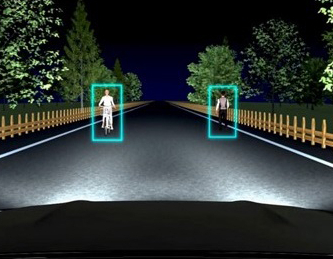Kyocera Single GaN laser for Night Vision
- November 8, 2022
- William Payne

Japanese electronics group Kyocera has developed an automotive night vision system to accurately detect collision risk objects in low visibility. This includes night, rain, snow, fog or smoke. The system is intended to reduce traffic accidents and increase road safety.
Kyocera’s Automotive Night Vision features a headlight that can emit both white (RGB) and near-infrared (NIR) light on the same optical axis. According to the company, this allows higher accuracy object recognition than alternative technologies.
The system integrates RGB-NIR sensors and an “Image-Fusion AI Recognition Technology” developed by Kyocera for high performance object recognition. , Kyocera has also developed a generative AI feature to create training data for more cost-efficient learning and product development.
Kyocera’s system integrates both white and near-infrared light from a laser headlight on a single optical axis. This eliminates image parallax and greatly enhances image recognition. The integrated headlight also incorporates an extremely bright, high-efficiency, miniaturised GaN laser developed by KYOCERA SLD Laser. The system has automatic “beam shaping” functionality for the RGB and NIR light that prevents glare for oncoming drivers by automatically shifting visible light into a low-beam pattern when necessary, while the NIR light can remain in high-beam mode.
Kyocera’s vehicle-mounted RGB-NIR sensor uses original fusion recognition AI technology developed by Kyocera labs. Instead of combining image data from the two sources, Kyocera’s system uses qualitative AI to compare and assess both RGB and NIR images, differentiating between pedestrians and vehicles with high accuracy even in low visibility conditions.
Kyocera’s AI technology generates training data automatically to avoid time consuming and costly collection of NIR training data, which conventional approaches require. As a result, this approach can significantly reduce training costs while maintaining high accuracy in recognition performance.
Kyocera says it will continue development of the technology, aiming for commercialisation after 2027.




